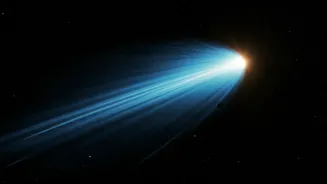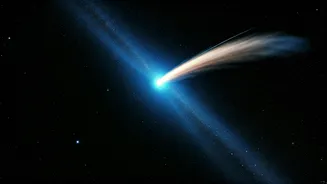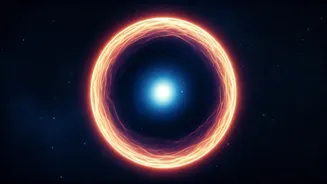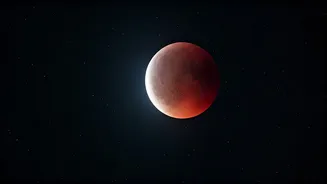The Solar Wind's Force
The solar wind, a stream of charged particles constantly emitted by the Sun, exerts significant influence on comets. It shapes and directs their tails,
which are composed of gas and dust. Usually, the comet's tail is a graceful, long streamer trailing away from the Sun. However, in a rare event, a strong surge of solar wind can cause a "disconnection event." This is when a segment of the tail abruptly detaches and drifts away, leaving the comet with a truncated appearance. The strength of the solar wind, its velocity, and its magnetic field all play crucial roles in these events. These factors interact with the comet's tail, leading to its disruption. These events are not very common, making each observation extremely valuable for scientists studying the complex interplay between celestial objects and space weather.
Comet Lemmon's Fate
Comet Lemmon was observed undergoing a significant tail disconnection. The solar wind, during this event, released a surge that interacted strongly with the comet's tail, ultimately leading to a portion of it separating. This specific type of event provides essential data to astrophysicists. By analyzing the data gathered during the disconnection, researchers were able to study the solar wind's density and the magnetic field conditions around the comet. This data is critical for understanding the mechanics of how the solar wind affects these icy bodies as they travel through space. Such observations are rare, making the data gathered from Comet Lemmon's encounter with the solar wind even more valuable. The ability to monitor comets under such conditions is crucial to improving space weather models and our overall comprehension of the solar system.
Rare Disconnection Event
Disconnection events are uncommon, making observations such as this one of high scientific value. The rarity of such events means that scientists have limited opportunities to study the processes behind the disintegration of the cometary tails. The recent observation of Comet Lemmon offered a unique chance to study the specific mechanisms which lead to the tail's disruption. The comet's tail, normally stretching millions of kilometers, quickly separated. The solar wind, packing a punch of energy, was the cause of the tail's disappearance. This kind of interaction helps researchers to refine space weather models. The data collected provides insight into the dynamic and often violent nature of space. The rare disconnection event serves as a reminder of the powerful forces that shape our solar system.
Decoding Space Weather
Space weather is a term used to describe the changing conditions in space that are driven by the Sun. These include solar flares, coronal mass ejections, and the solar wind, all of which impact the space environment. Monitoring and understanding space weather are of vital importance because these events can influence technology on Earth, like disrupting satellite communications and power grids. Studying comets offers a special way to investigate space weather. Comets serve as cosmic laboratories, providing a natural setting to observe the effects of solar activity. When the solar wind interacts with a comet, it produces observable effects, like tail disconnections. By studying these events, scientists can refine their models of space weather. This, in turn, helps improve forecasting and protection strategies for both space-based and terrestrial systems. The continued research into solar wind-comet interaction improves our ability to safeguard against the impacts of space weather.












